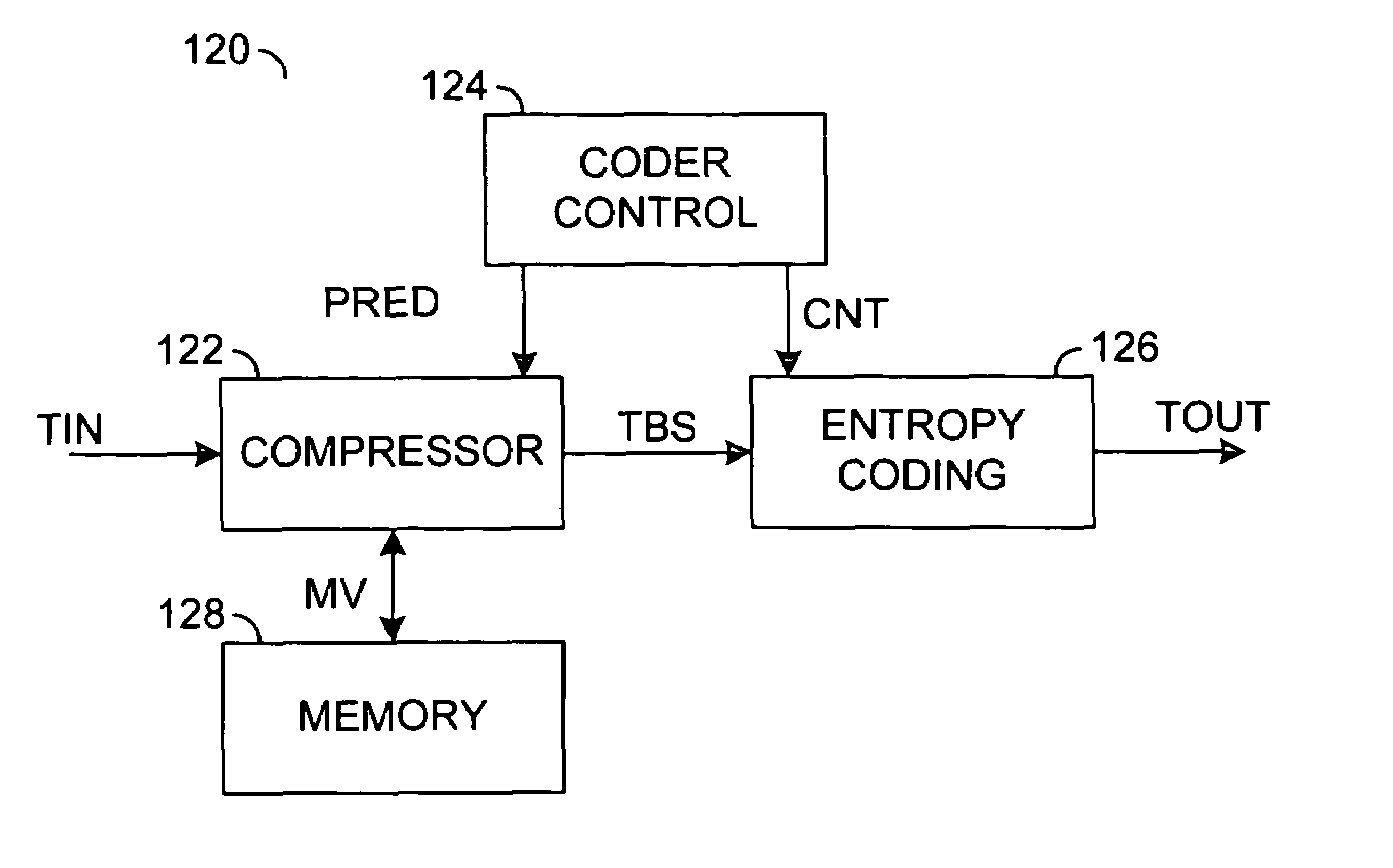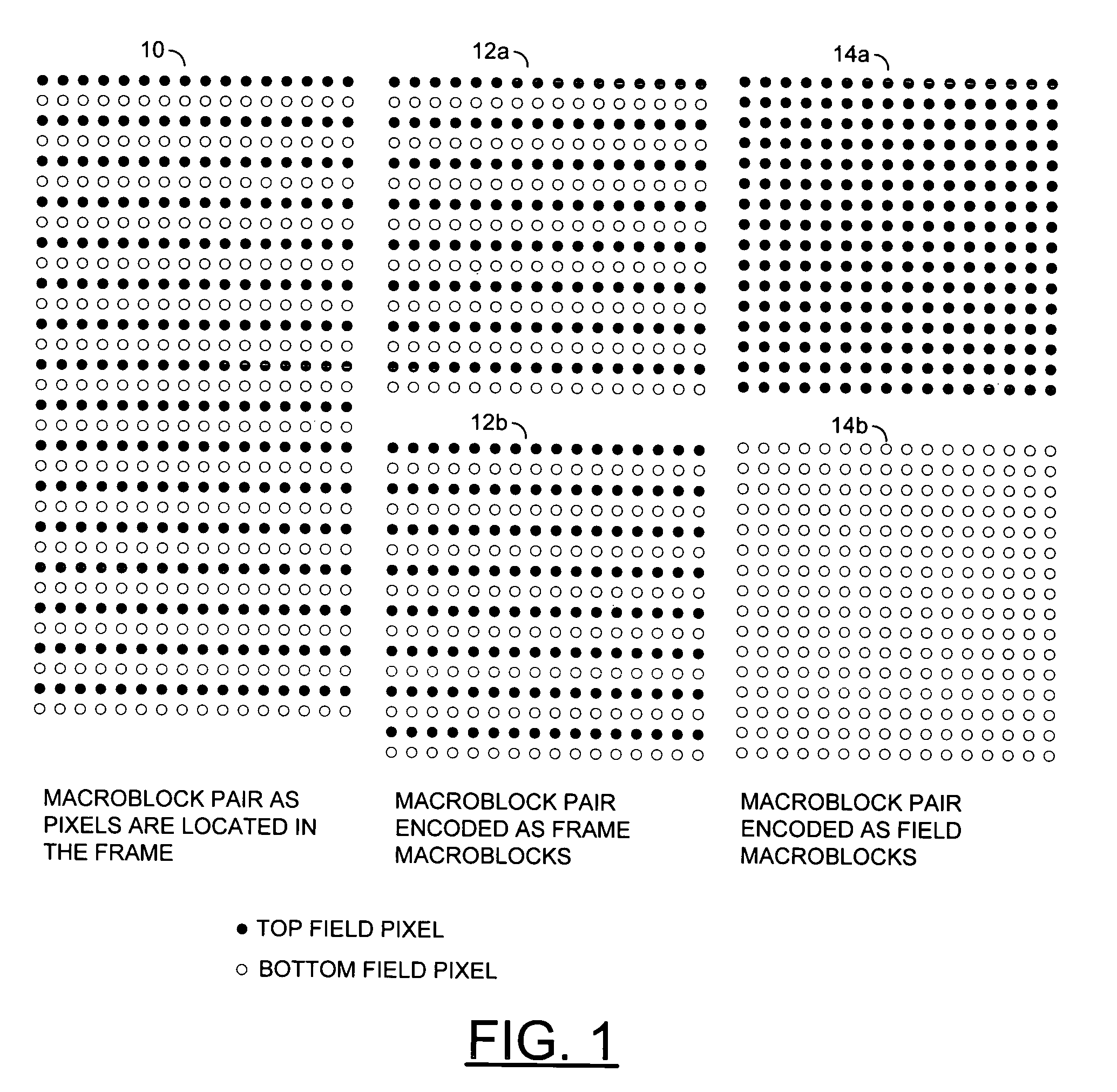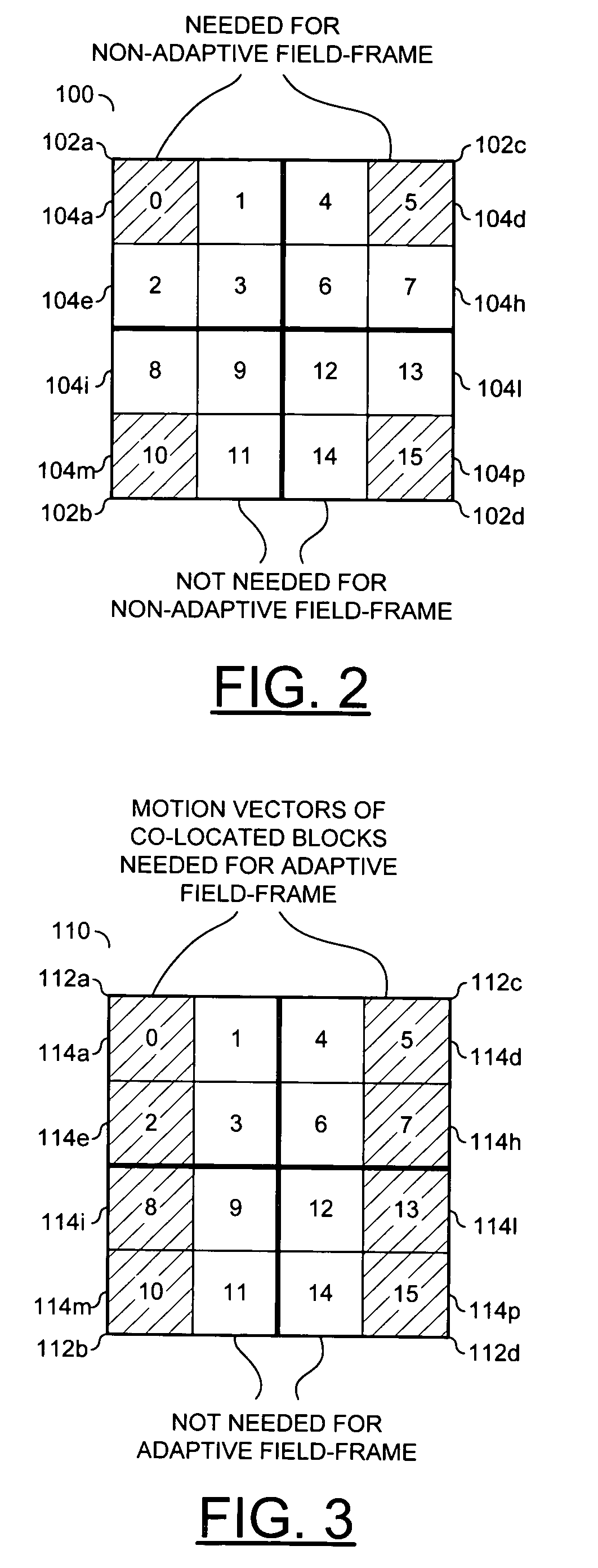Co-located motion vector storage
a motion vector and storage technology, applied in the field of motion vectors, can solve the problems of increasing the cost of decoding or encoding systems, consuming considerable storage space, etc., and achieve the effects of reducing the size of external memories, reducing the cost of encoders, and less spa
- Summary
- Abstract
- Description
- Claims
- Application Information
AI Technical Summary
Benefits of technology
Problems solved by technology
Method used
Image
Examples
Embodiment Construction
[0015]The H.264 standard generally provides that a motion vector in a video bitstream may cover a region (e.g., macroblock, macroblock partition and macroblock sub-partition) of any one of several different sizes. The sizes may include 16H×16V, 8H×16V, 16H×8V, 8H×8V, 4H×8V, 8H×4V and 4H×4V pixel regions. Moreover, every region may have zero, one or two motion vectors. For intra region prediction, no motion vectors may be defined. For single direction prediction (e.g., forward prediction and backwards prediction), a list 0 (e.g., L0) motion vector or a list 1 (e.g., L1) motion vector may be defined. Bidirectional prediction generally includes both an L0 motion vector and an L1 motion vector for each region. For direct mode prediction, the motion vectors may be inferred but not transmitted.
[0016]Referring to FIG. 2, a block diagram of a frame block 100 using inferred motion vectors is shown. The H.264 standard generally restricts the way that motion vectors may be used for various Pro...
PUM
 Login to View More
Login to View More Abstract
Description
Claims
Application Information
 Login to View More
Login to View More - R&D
- Intellectual Property
- Life Sciences
- Materials
- Tech Scout
- Unparalleled Data Quality
- Higher Quality Content
- 60% Fewer Hallucinations
Browse by: Latest US Patents, China's latest patents, Technical Efficacy Thesaurus, Application Domain, Technology Topic, Popular Technical Reports.
© 2025 PatSnap. All rights reserved.Legal|Privacy policy|Modern Slavery Act Transparency Statement|Sitemap|About US| Contact US: help@patsnap.com



